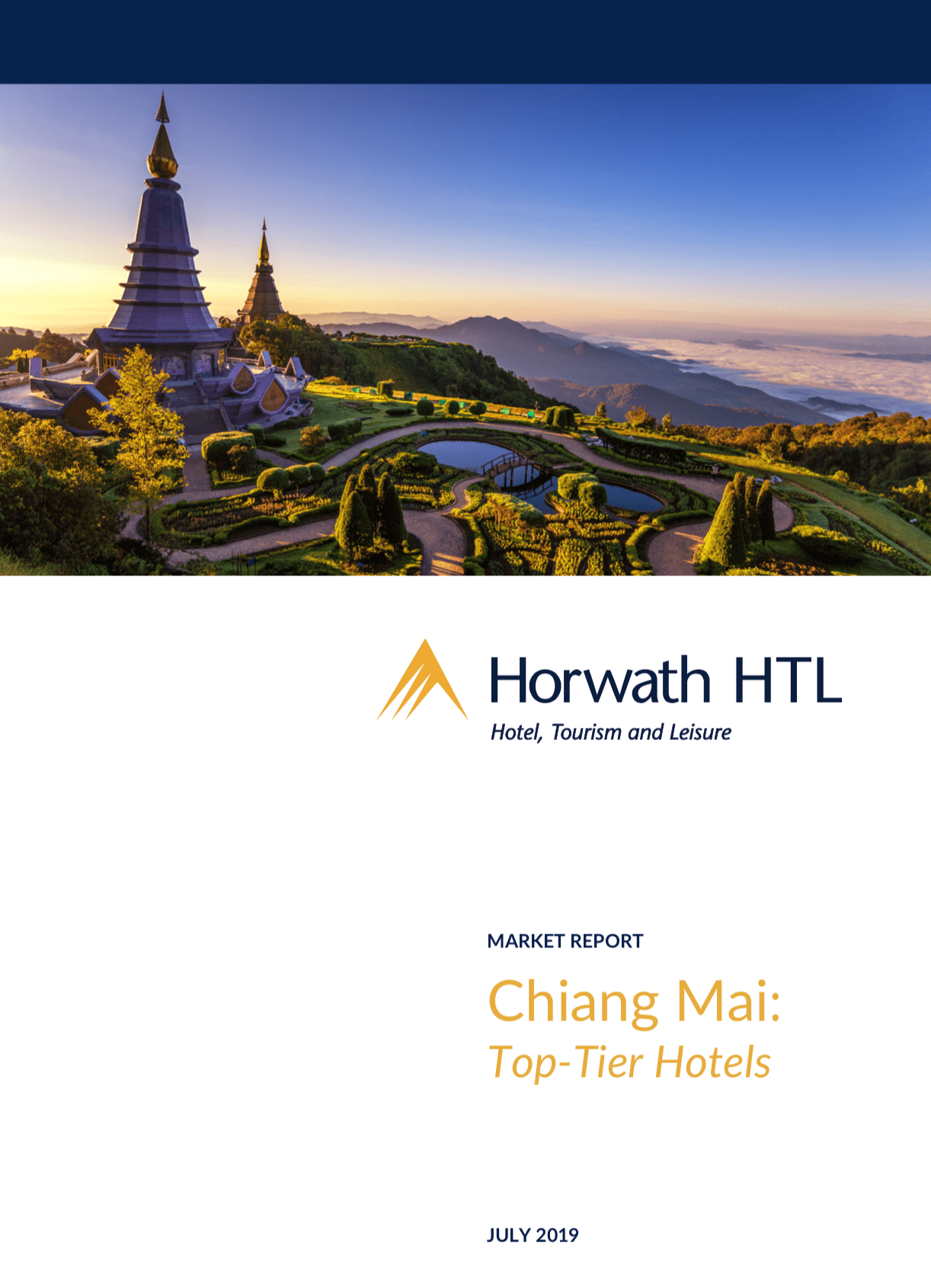
Market Report
Market Report: Chiang Mai, Thailand
After a buoyant period of booming tourism demand, Chiang Mai has felt the impact of new supply on top-tier hotel performance.
Heightened hotel investments, along with infrastructure bottlenecks, will likely dampen near-term growth. Passive investors could continue to take a long-term view of this unique charming town’s potential.
Major transport improvement plans, the UNESCO World Heritage Initiative Project and the vested interest of a property tycoon in developing his riverside land bank into another tourism landmark give rise to optimism for the destination.
Nevertheless, opportunistic and institutional players will remain cautious until Chiang Mai’s next upswing returns in earnest.
Tourism Growth and Trends
- Visitor Arrivals: Chiang Mai has developed a strong international tourism profile over the past decade. The international aircraft movement ratio at Chiang Mai Airport rose from 14% in 2008 to 27% in 2018, largely driven by direct flights from key Chinese cities.
- High Season: Runs from November to February, with shoulder months in March and April, and low season from May to September. Despite the rainy season, Chinese tourists continue to visit, particularly during Chinese New Year and October Golden Week.
- Length of Stay: Average length of stay has declined due to a shift from long-haul to short-haul visitors, primarily from China and South Korea, who typically stay for a few nights.
Hotel Market Performance
- Top-Tier Hotels: The study focuses on hotels mostly located around the Ping River and Nimmanhemin, divided into two groups based on ADR.
- Occupancy and ADR Trends: From 2015 to 2018, the average annual supply growth of top-tier hotels was moderate at 4%. Occupancy hit a high of 78% in 2015 but has since declined due to new supply. Market ADR grew at a 4% Compound Average Annual Growth (CAAG), while RevPAR saw modest growth.
Higher Rate Category (Above THB 3,500)
- Comprises five-star upper upscale and luxury properties.
- Emphasis on rate growth resulted in strong ADR increases and healthy RevPAR growth.
Lower Rate Category (THB 1,300 to THB 3,500)
- Includes upscale hotels with significant supply additions, such as U Nimman and Mövenpick’s new wing.
- Competitive pricing led to ADR and RevPAR growth driven by favorable market conditions.
Demand Segmentation
- Wholesale FIT: Primarily from long-haul markets, with a growing share from China.
- Direct FIT: Driven by loyalty programs and repeat guests, though not as high as in Bangkok and Hua Hin.
- OTA: Fastest-growing segment, with more hotels adapting to digital marketing.
- MICE/Business Groups: Significant demand, with Chiang Mai identified as one of Thailand’s top five MICE cities.
- Leisure Groups: Rely on Chinese tour groups to maintain occupancy levels.
Nationality Mix
- China: Largest and fastest-growing market, contributing 27%.
- Thailand: Second-largest, with a 15% share.
- Other Markets: UK, Japan, South Korea, Spain, and the Middle East. East and Southeast Asia form 53% of demand, followed by Europe and the Americas.
New Hotel Supply
- Supply Growth: Expected to be strong at 10% per year from 2019 to 2023, moderating to 3% annually thereafter.
Notable New Developments:
- Raya Heritage: 33 rooms
- Empress Premier: 138 rooms
- Rati Lanna Extension: 40 rooms
- Novotel Nimman Journeyhub: 202 rooms
- Melia (formerly Pornping): 260 rooms
Performance Outlook
- Occupancy: Expected to soften to 65-70% over the next five years due to supply outpacing demand.
- ADR Growth: Likely to weaken to below inflation rates due to the supply-demand imbalance. The lower rate category will see above-inflation ADR growth due to the addition of international branded hotels.
Download the report
For detailed charts, graphs, and further analysis, download the full report here



